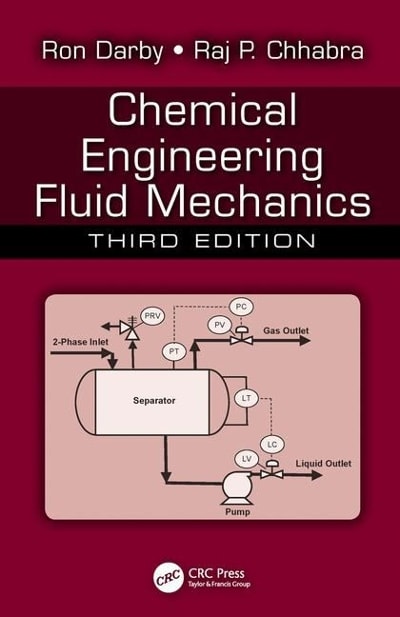A concentrated slurry is prepared in an open $8 mathrm{ft}$ diameter mixing tank, using an impeller with
Question:
A concentrated slurry is prepared in an open $8 \mathrm{ft}$ diameter mixing tank, using an impeller with a diameter of $6 \mathrm{ft}$ located $3 \mathrm{ft}$ below the free surface. The slurry is non-Newtonian and can be described as a Bingham plastic with a yield stress of $50 \mathrm{dyn} / \mathrm{cm}^{2}$, a limiting viscosity of $20 \mathrm{cP}$, and a density of $1.5 \mathrm{~g} / \mathrm{cm}^{3}$. A vortex is formed above the impeller, and if the speed is too high the vortex can reach the blades of the impeller entraining air and causing problems. Since this condition is to be avoided, you need to know how fast the impeller can be rotated without entraining the vortex. To do this, you conduct a lab experiment using a scale model of the impeller that is $1 \mathrm{ft}$ in diameter. You must design the experiment so that the critical impeller speed can be measured in the lab and scaled up to determine the critical speed of the larger mixer.
(a) List all the variables that are important in this system, and determine an appropriate set of dimensionless groups.
(b) Determine the diameter of the tank that should be used in the lab, and the depth below the surface at which the impeller should be located.
(c) Should you use the same slurry in the lab model as in the field? If not, what properties should the lab slurry have?
(d) If the critical speed of the impeller in the lab system is $\omega(\mathrm{rpm})$, what is the critical speed of the impeller in the large tank?
Step by Step Answer:

Chemical Engineering Fluid Mechanics
ISBN: 9781498724432
3rd Edition
Authors: Ron Darby, Raj P Chhabra





